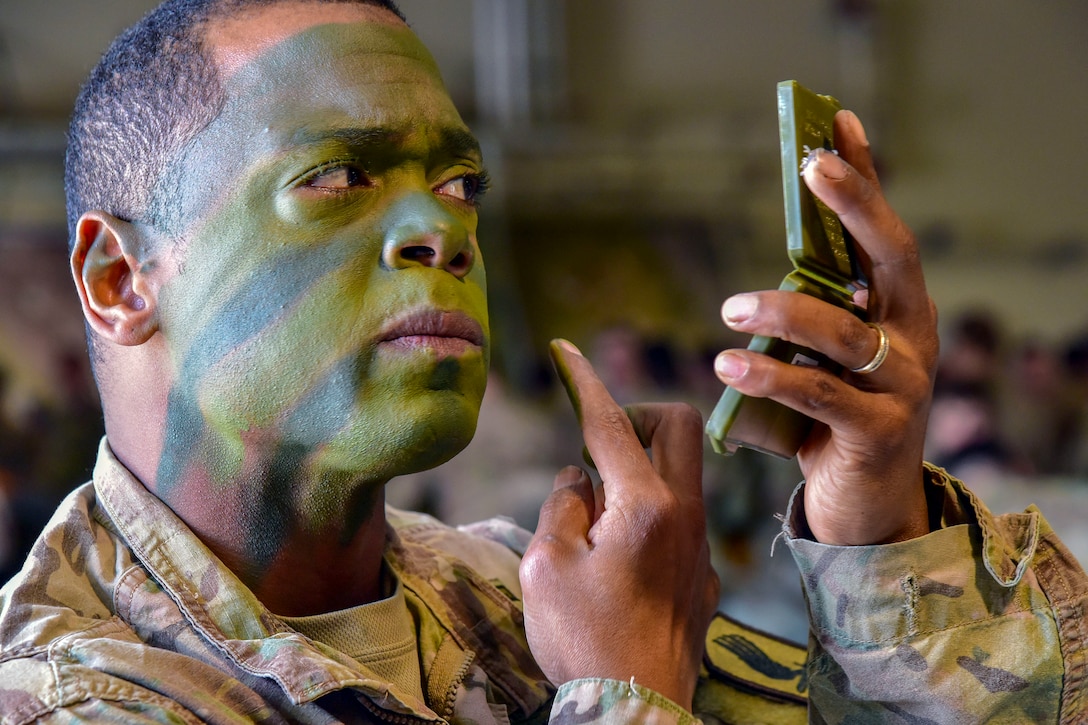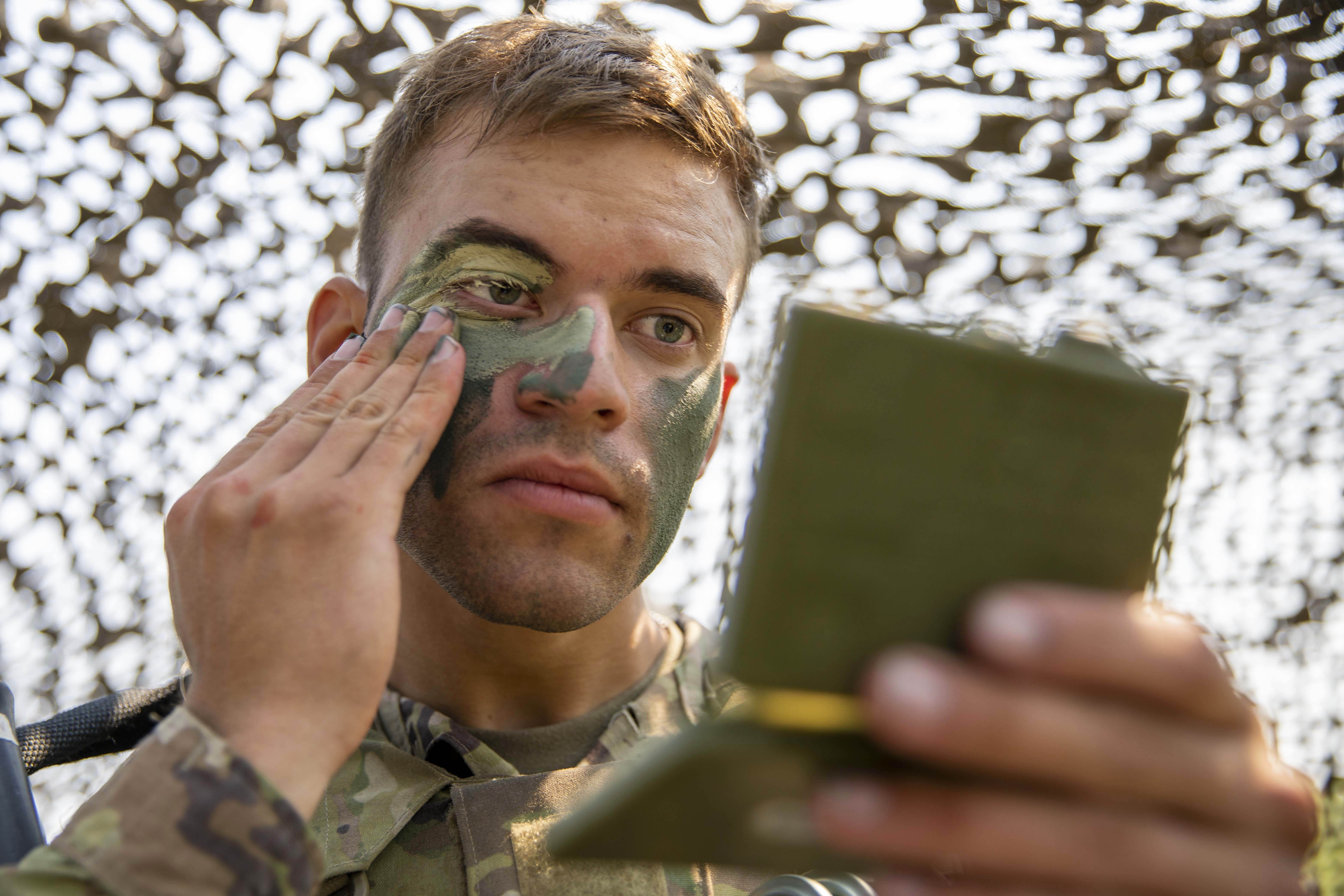Army Face Paint Regulation
Army Face Paint Regulation: The Ultimate Guide
Face paint holds a special place in the hearts of soldiers. It not only adds an element of disguise and intimidation but also symbolizes unity and camaraderie. As an essential part of military culture, it's crucial to understand and adhere to the Army Face Paint Regulation. In this post, we will explore everything you need to know about face paint in the army, from its history to the dos and don'ts. So let's dive in and unlock the secrets behind the intricate art of army face paint!
1. The Historical Significance of Army Face Paint

Face paint has been used by warriors throughout history to instill fear in their enemies and enhance their own confidence. From ancient civilizations to modern armed forces, face paint has been an integral part of military tradition and warfare symbolism. It creates a distinct identity and gives soldiers a sense of pride.
2. The Importance of Following Army Face Paint Regulation

The Army Face Paint Regulation exists to ensure uniformity, security, and professionalism among soldiers. It outlines guidelines to follow while applying face paint and sets standards for color schemes, patterns, and permissible designs. Adhering to these regulations is not only essential for maintaining military discipline but also for ensuring the safety and practicality of face paint in combat situations.
3. How to Apply Face Paint According to the Army Regulation
Now that we understand the historical significance and importance of the Army Face Paint Regulation, let's delve into the practical aspects of applying face paint.
Step 1: Cleanse and Prep: Before applying face paint, ensure your face is clean and free from dirt or oils. Use a gentle cleanser and pat dry with a towel.
Step 2: Moisturize: Apply a light moisturizer to create a smooth canvas that allows for easy application and removal of face paint.
Step 3: Base Layer: Begin by applying a thin, even layer of the base color. This will help enhance the vibrancy and longevity of the face paint design.
Step 4: Design: Follow the Army Face Paint Regulation guidelines to create your desired design. Use a mirror or seek assistance from fellow soldiers to ensure symmetry and accuracy.
Step 5: Seal and Set: To prevent smudging or running, apply a setting spray or powder to seal the face paint and ensure it stays intact throughout your mission or training.
Remember, while it is essential to express your individuality and creativity, it is equally important to adhere to the prescribed regulations to maintain uniformity within the military.
FAQs about Army Face Paint
Q1: Can I use any color for face paint in the army?
A1: No, the Army Face Paint Regulation specifies the approved colors for face paint. Generally, colors like black, green, brown, and tan are used to blend with the surroundings and provide effective camouflage.
Q2: Can I create any design on my face?
A2: No, the Army Face Paint Regulation restricts the designs to specific patterns, such as camouflage, to maintain consistency and ensure soldiers blend in with their surroundings.
Q3: Can I wear face paint during non-operational activities?
A3: While face paint is primarily used during operational activities, it may be allowed in certain non-operational situations, such as military-themed events or celebrations. However, it is essential to consult with your commanding officer and adhere to any specific guidelines provided.
Listicle: 5 Creative Face Paint Designs Inspired by Army Culture
If you're looking to add a touch of army-inspired creativity to your face paint design, here are five ideas to get you started:
-
1. The Camouflage Classic

Embrace the classic, time-tested camouflage pattern using shades of green, brown, and black. Incorporate organic shapes and irregular lines to mimic the natural environment and achieve the perfect blend with your surroundings.
-
2. The Flag Tribute

Show off your patriotic spirit by incorporating the colors and symbols of your country's flag into your face paint design. It's a great way to pay homage to your nation while adding a personal touch to your appearance.
-
3. The Warrior Markings

Channel your inner warrior by creating unique and bold markings on your face. Use intense colors and strong lines to create an intimidating look that exudes strength and resilience.
-
4. The Squadron Symbol

If you belong to a specific squadron or unit, incorporate its symbol or emblem into your face paint design. Not only does it instill a sense of pride and identity, but it also showcases the unity and teamwork within your group.
-
5. The Hidden Message

Get creative by hiding a secret message or symbol within your face paint design. Choose symbols or patterns that hold personal meaning or represent something significant to you, allowing you to carry a hidden story wherever you go.
Remember to always follow the Army Face Paint Regulation while incorporating these creative designs. Your individuality and creativity can shine through within the boundaries set by the regulation, ensuring a cohesive and disciplined military appearance.
Now that you are well-informed about the historical significance, regulations, and creative possibilities of army face paint, embrace this artistic tradition with pride and honor. Army face paint not only transforms your appearance but also strengthens the bond among soldiers, making you a part of a rich military legacy that extends beyond the paint on your face. Carry the traditions forward, stand strong, and paint your warrior spirit!
Camouflage Paint
 Image Source : www.defense.gov
Image Source : www.defense.gov +23 Army Camo Paint - Asian Paint Card
 Image Source : asianpaintcard.blogspot.com
Image Source : asianpaintcard.blogspot.com camo
Pintura Camuflaje Militar Cara - CARYE
 Image Source : caryeq.blogspot.com
Image Source : caryeq.blogspot.com Army Face Paint, Hunting Face Paint, Camouflage Face Paint, Camouflage
 Image Source : www.pinterest.com
Image Source : www.pinterest.com Face Focus
 Image Source : www.defense.gov
Image Source : www.defense.gov ARMY FACE PAINT BODY MAKEUP CAMOUFLAGE CAMO FANCY DRESS COSTUME
 Image Source : iluvislam.com
Image Source : iluvislam.com Army Face Paint Fancy Dress - DRESSTC
 Image Source : dresstc.blogspot.com
Image Source : dresstc.blogspot.com Gangsters Out Blog: Prince George Lockdown
 Image Source : gangstersout.blogspot.com
Image Source : gangstersout.blogspot.com george prince man lockdown makeup faminine fact because undereye guerilla fighting am bags vancouver manly combatants need gangsters comments
Face focus. +23 army camo paint. Army face paint body makeup camouflage camo fancy dress costume. George prince man lockdown makeup faminine fact because undereye guerilla fighting am bags vancouver manly combatants need gangsters comments. Pintura camuflaje militar cara